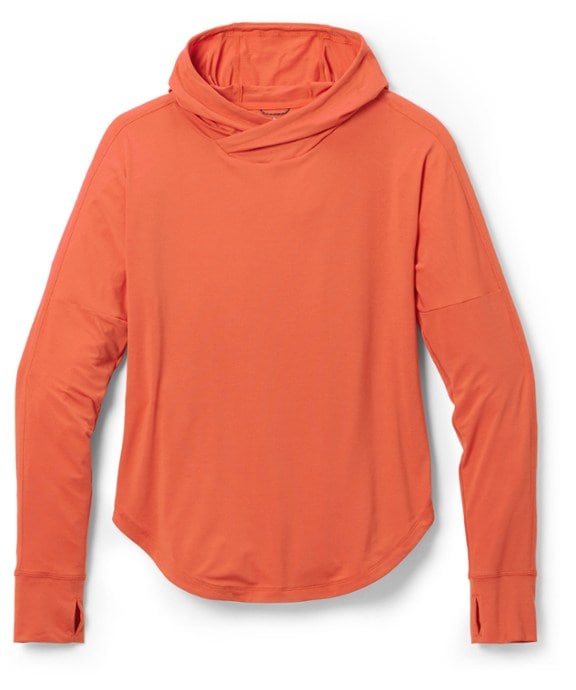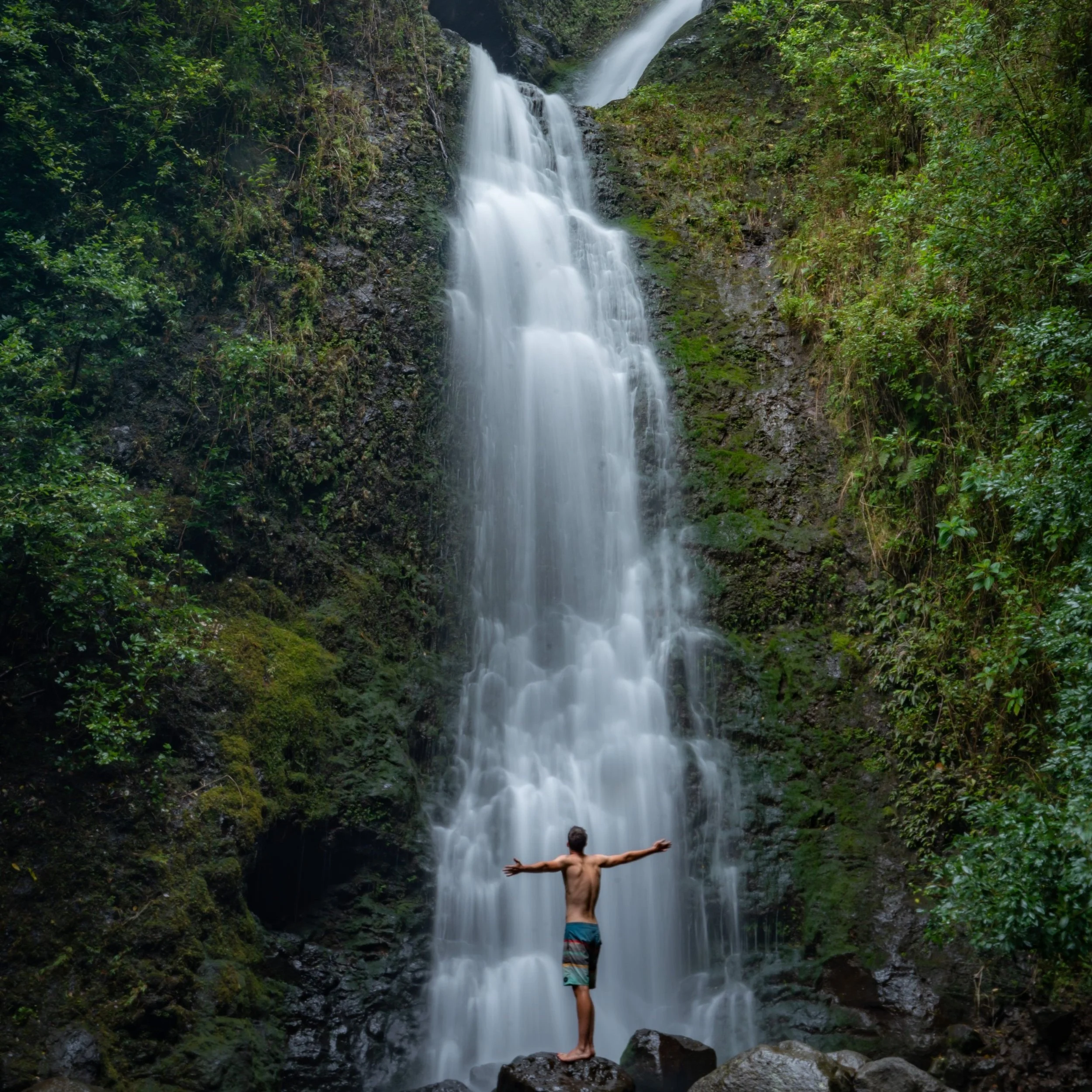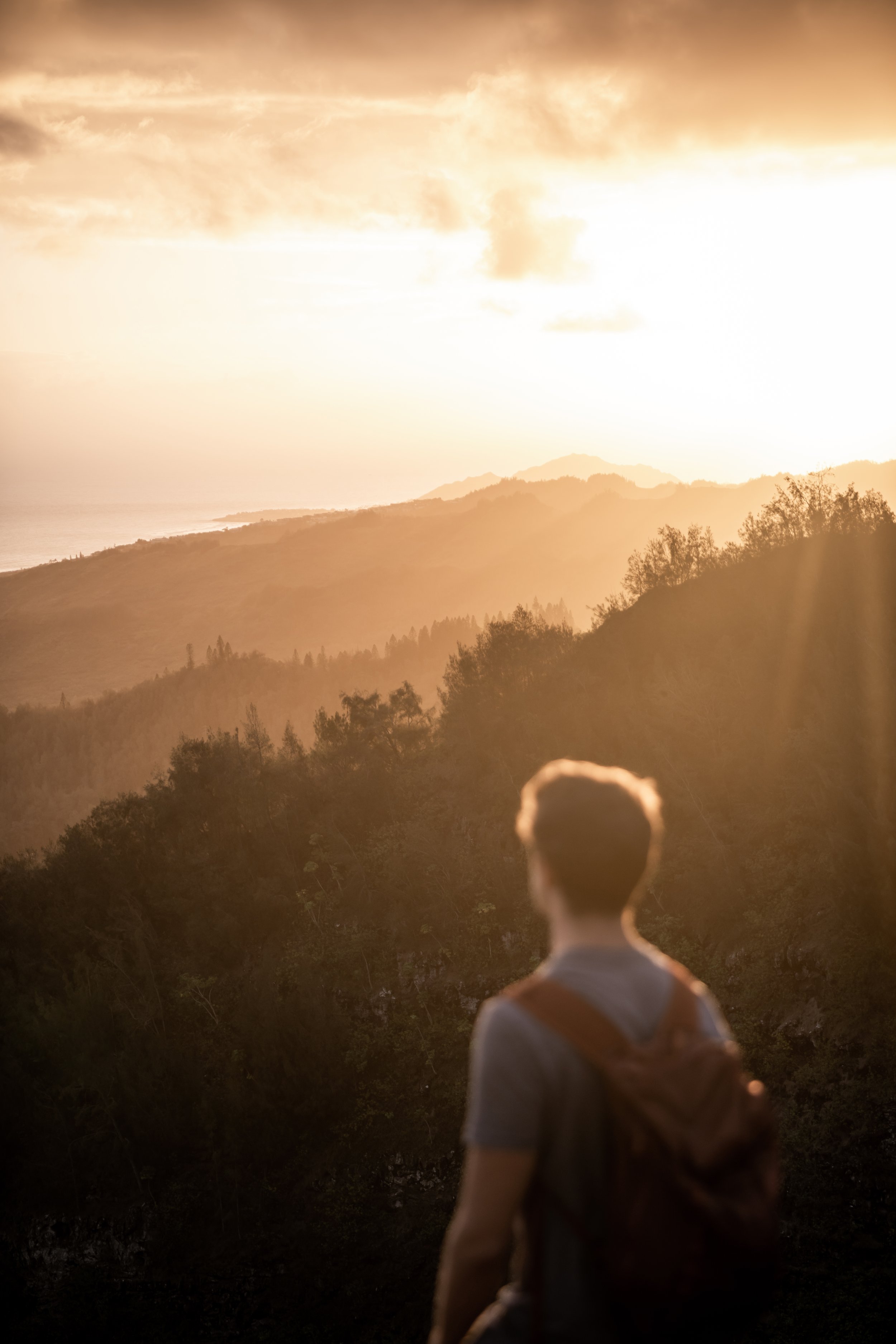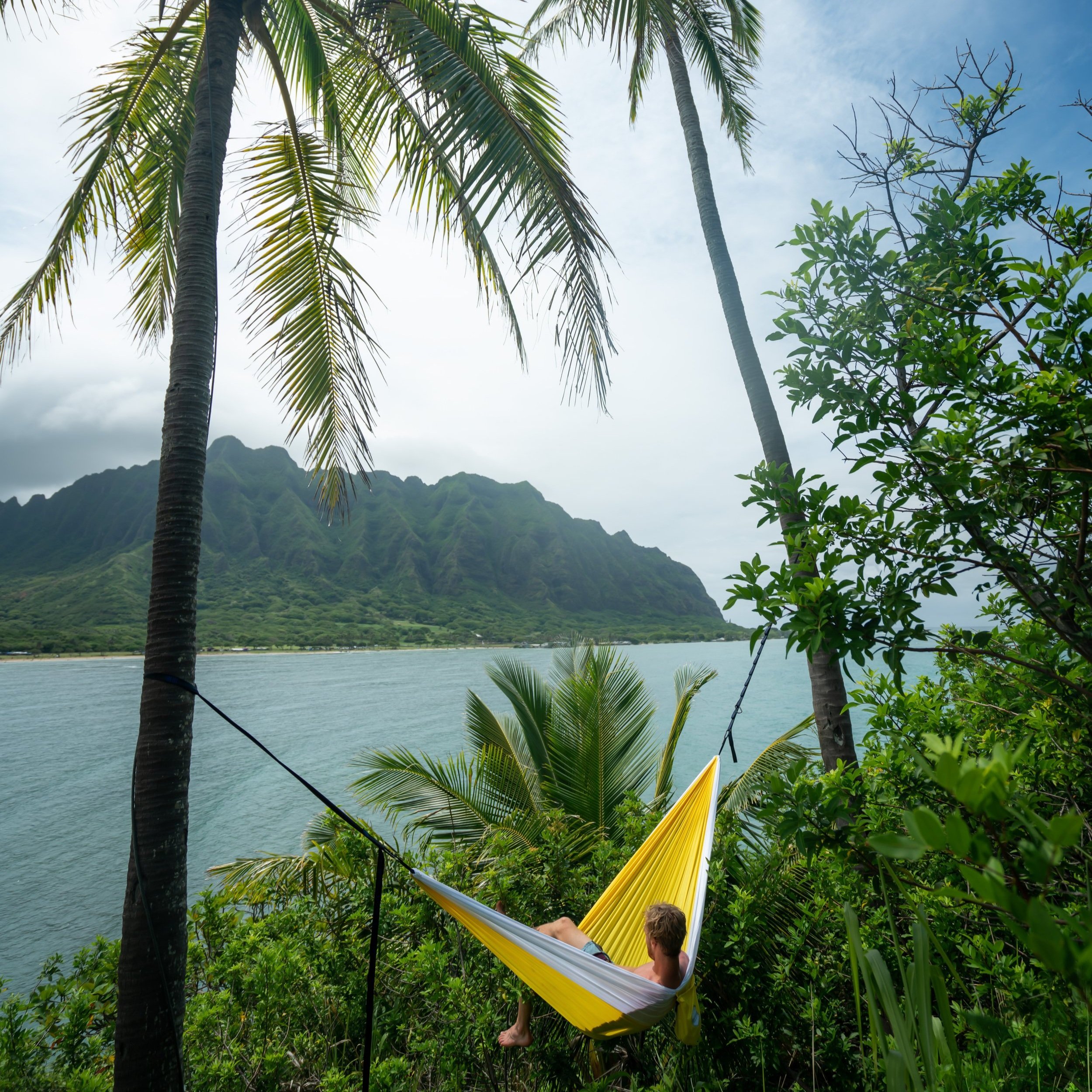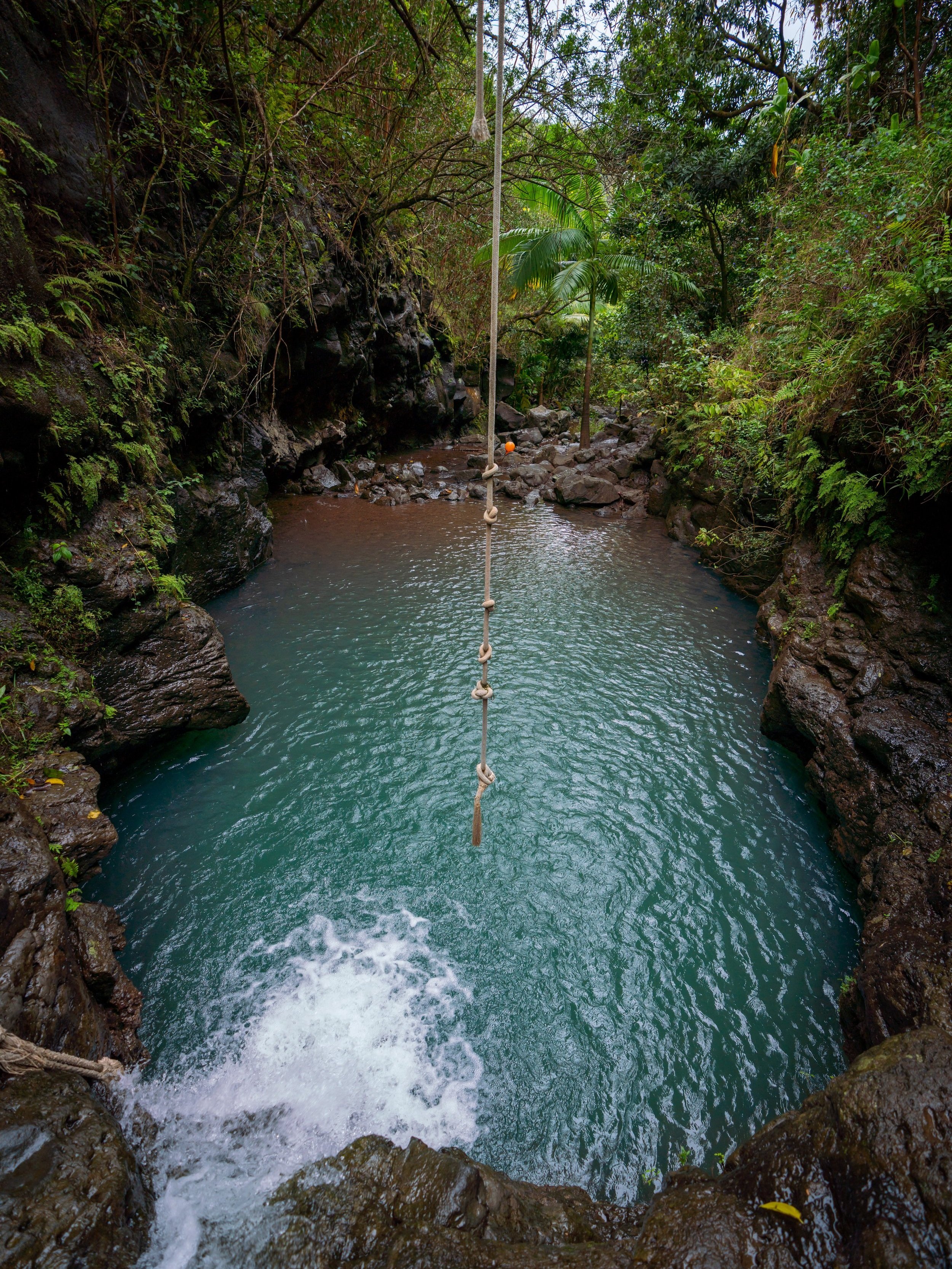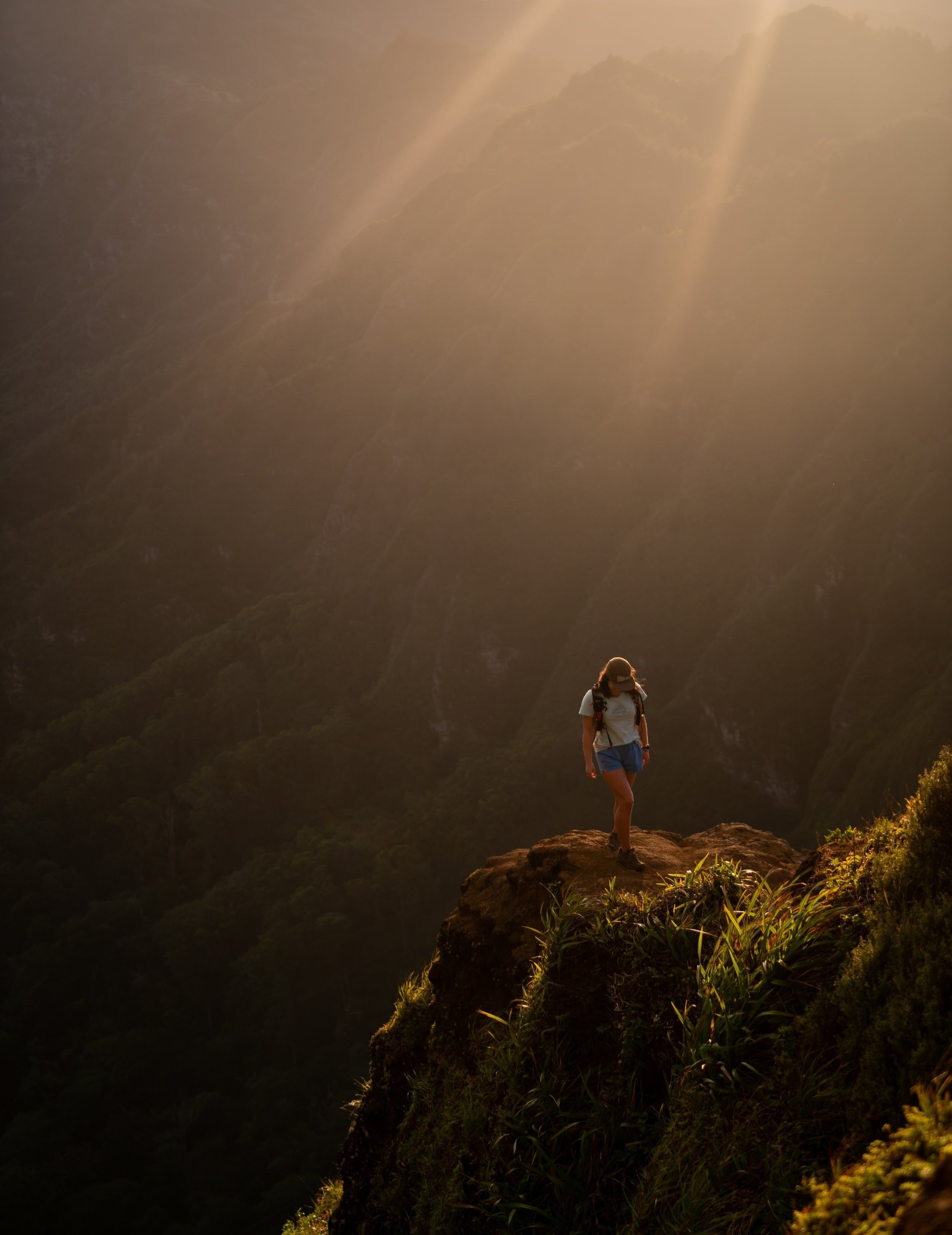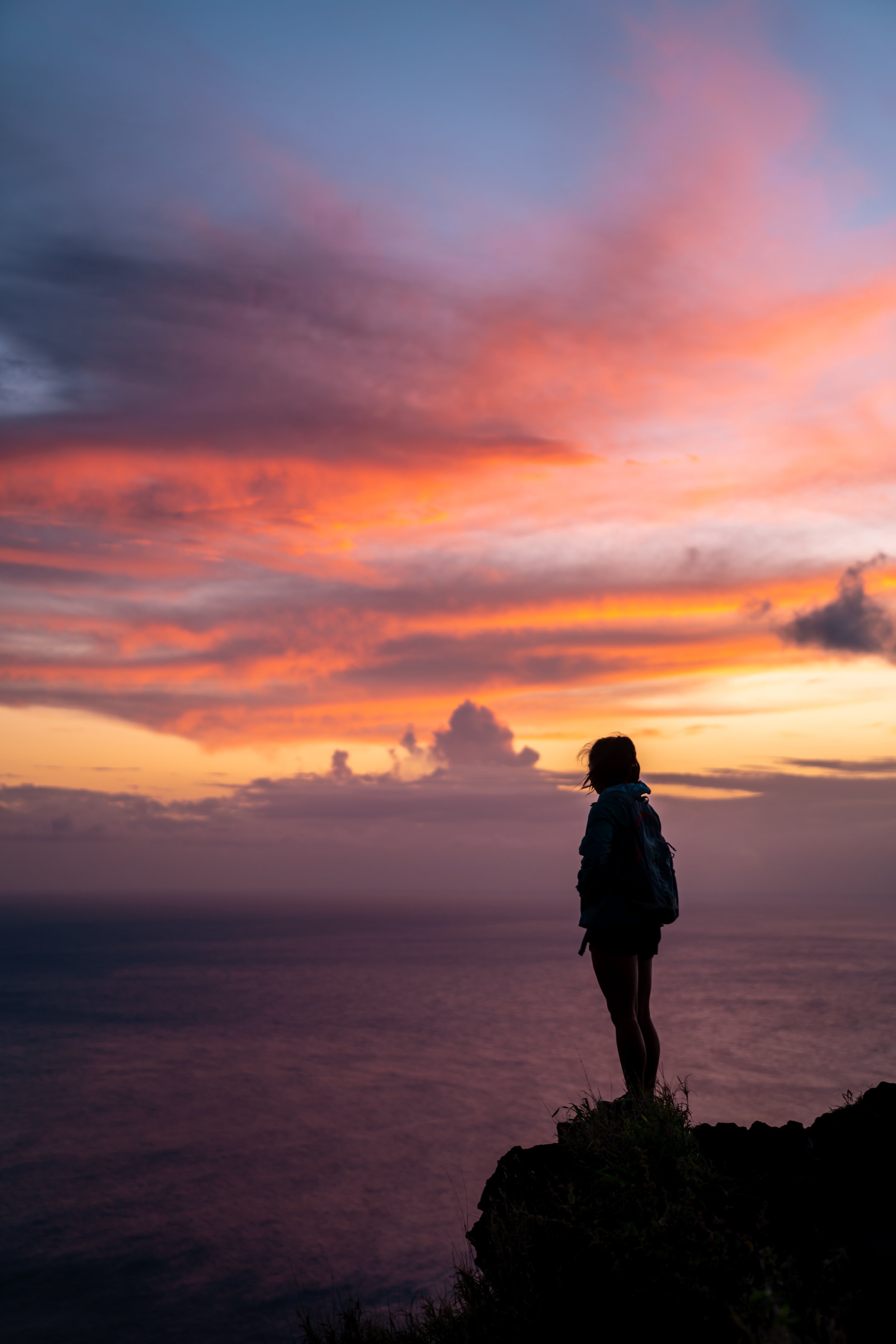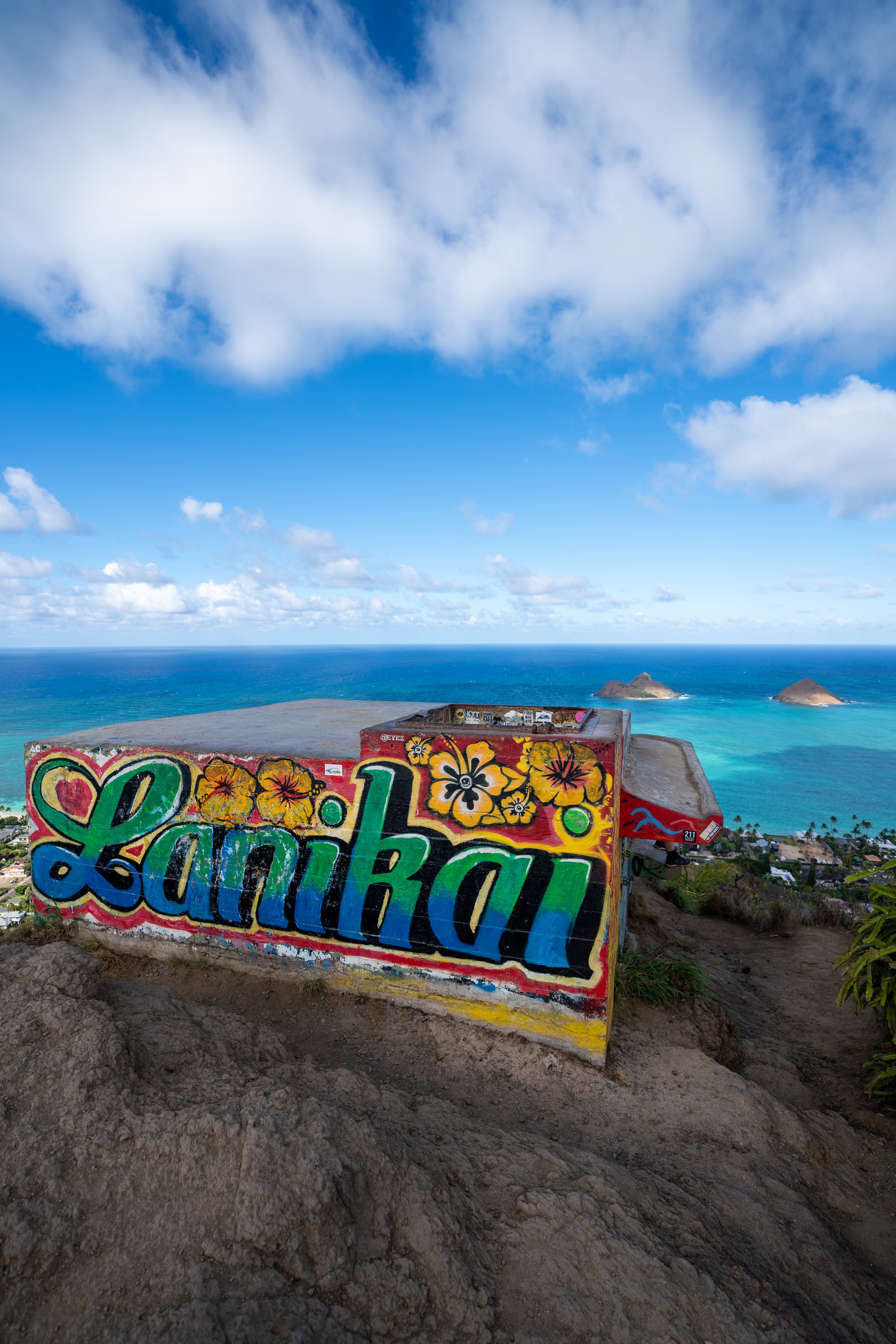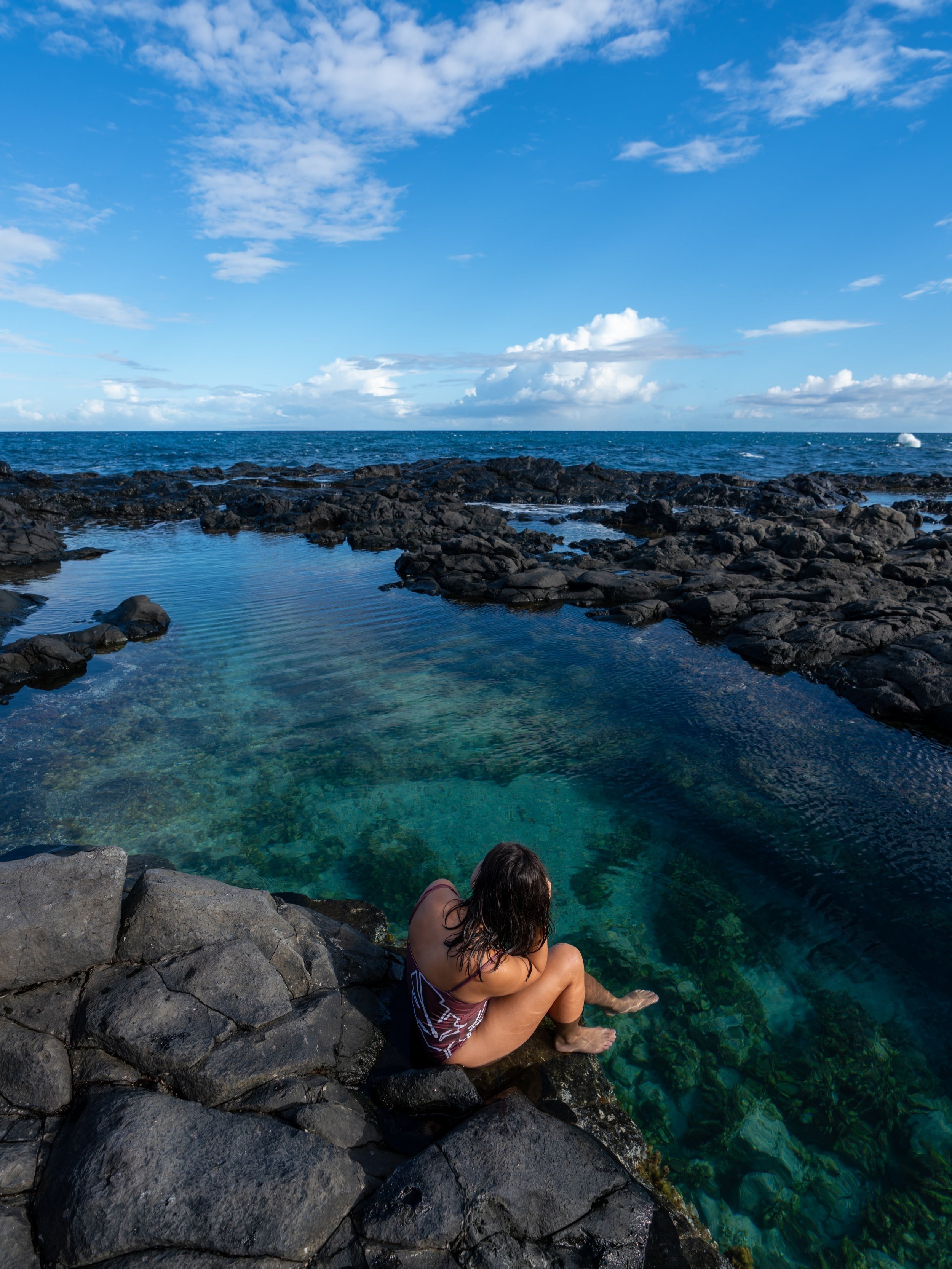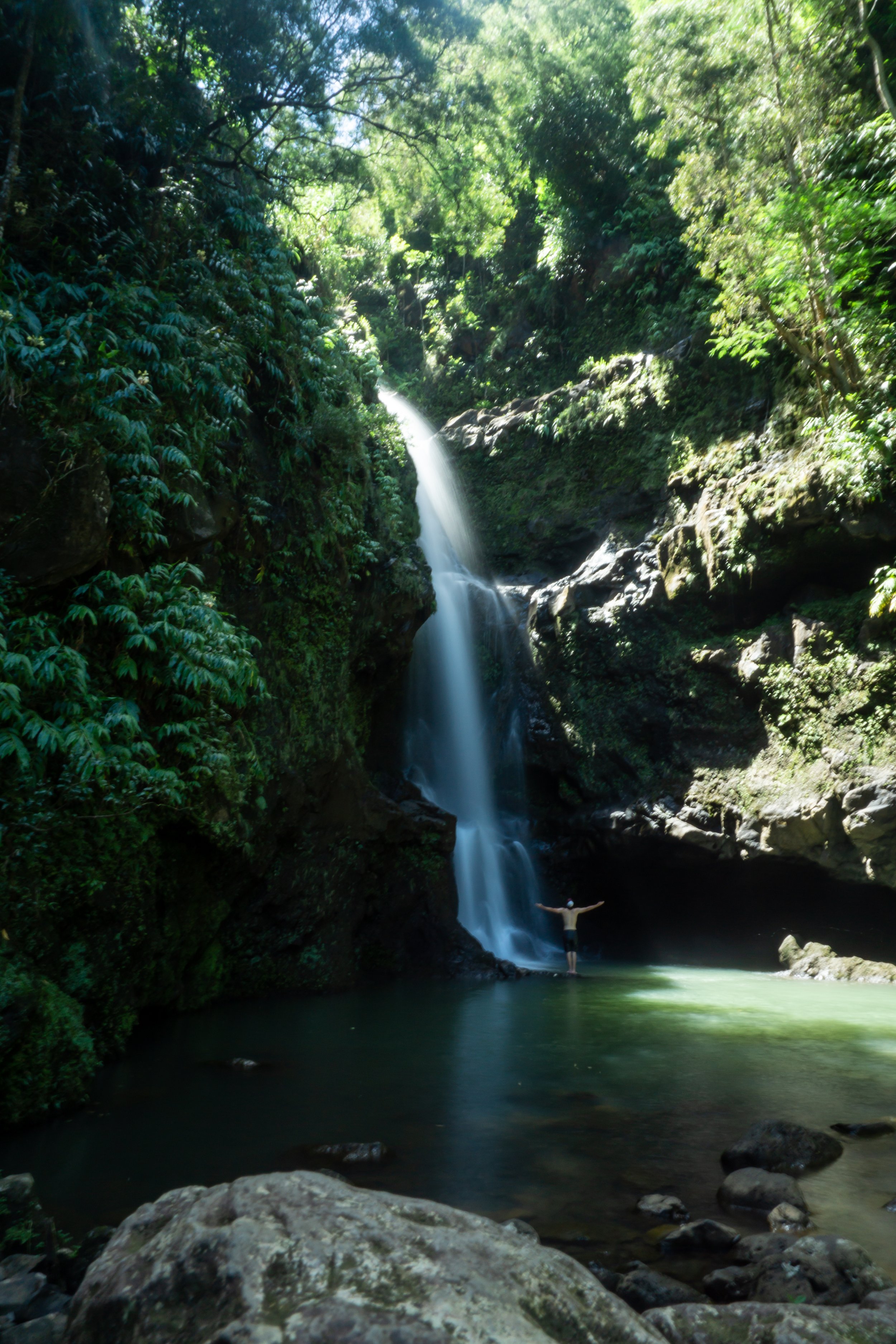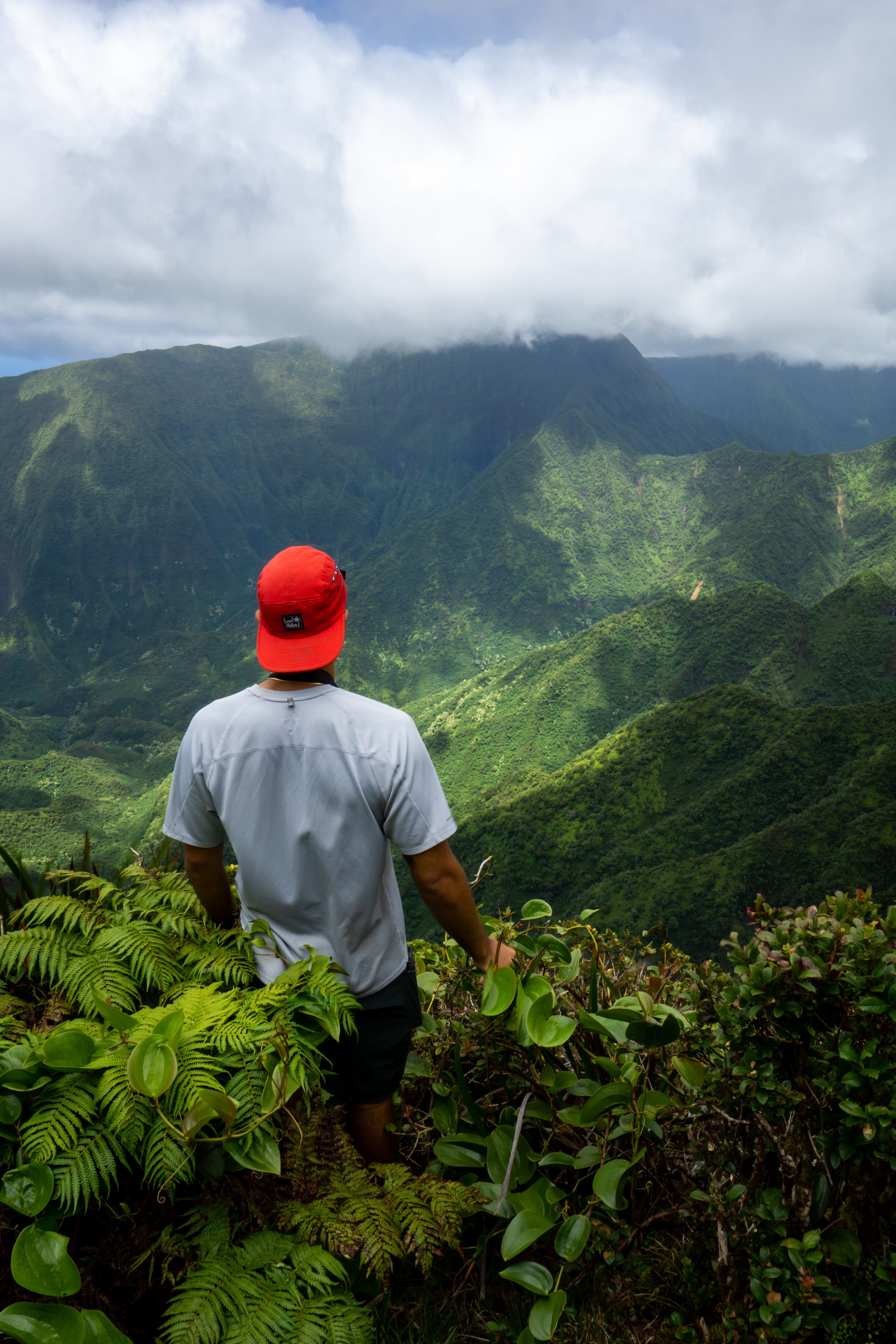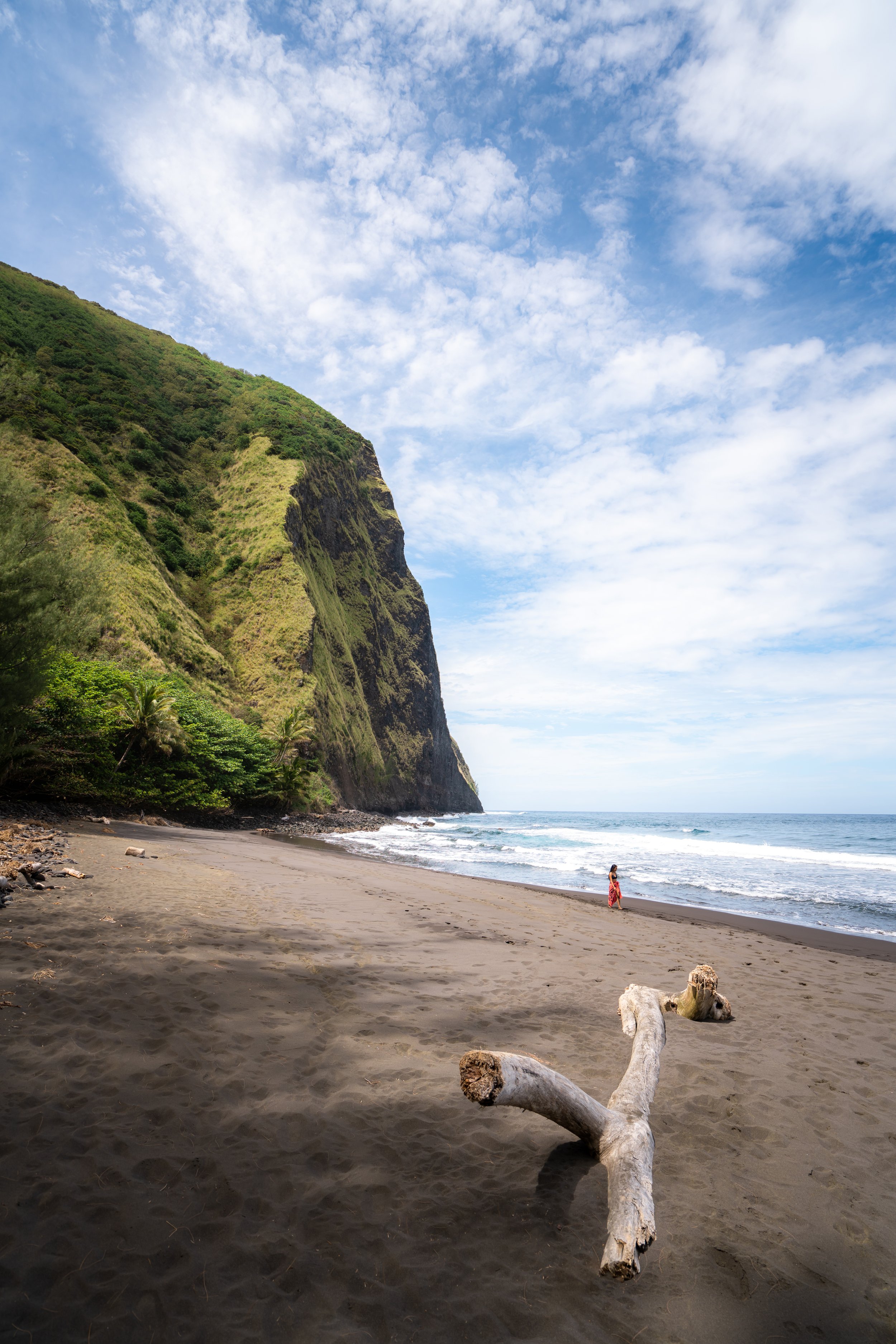Hiking the Koko Crater Botanical Garden Loop Trail on Oʻahu, Hawaiʻi
Distance: 2.0 - 3.0 miles / 3.2 - 4.8 km
The Koko Crater Botanical Garden in east Oʻahu is a beautiful, easy hike through the remnants of an ancient volcanic cinder cone that now serves as a dryland botanical garden for both native and non-native plants.
There is no cost to visit the Koko Crater Botanical Garden, and the trail is open to all visitors from sunrise to sunset on most days of the year, with the exception of certain holidays.
Furthermore, the Koko Crater Botanical Garden Loop is advertised as 2.0 miles (3.2 km), but the reason the distance above varies is that it’s common to hike at least 2.5 miles (4.0 km), depending on whether and how many side trails you choose to explore.
This is all to say that the Koko Crater Botanical Garden is easily one of the best hikes near Waikīkī, as well as one of the best kid-friendly hikes on Oʻahu—not to mention that the trail allows visitors the opportunity to see some of Hawaiʻi’s rarest and most endangered dryland plants, some of which are incredibly difficult to find in the wild!
Koko Crater Botanical Garden Parking
Parking for the Koko Crater Botanical Garden is located at the very end of Kokonani Street in Hawaiʻi Kai, and it serves as both the joint trailhead for the garden, as well as the Koko Crater Rim Trail.
On the a different note, the city hires a private security guard to prevent break-ins, but with any trailhead on Oʻahu, don’t get complacent. Don’t leave visible bags or anything valuable in your car.
Google Maps Directions: Koko Crater Botanical Garden
My Hawaiʻi Hiking Checklist
Osprey 3L Water Bladder - The Osprey 3L water bladder is the most universal hiking and backpacking water bladder on the market, and it’s my go-to because of the slide-off seal that allows it to be quickly filled from the top. Additionally, individual parts are easily replaceable, such as the bite valve.
Blister / Heel Protectors - I swear by these cheap, amazing heel protectors to prevent blisters for nearly every kind of hiking and backpacking that I do!
Black Diamond Headlamp - Personally, I recommend the Black Diamond Storm because it is one of the brightest, lightest, and longest-lasting headlamps on the market—and trust me, the weight-to-battery-life ratio really does matter!
Hiking / Trail Running Shoes - Depending on the type of trail, I prefer to use either the Keen Targhee for longer, more rugged hiking or the HOKA Zinal Trail-Running Shoe for lighter, less intense trails. In either case, both have been amazing to me for many years across countless environments, and both can be found in men’s and women’s sizes. - (Men’s Keen / Women’s Keen) (Men’s HOKA / Women’s HOKA)
Waterproof Rain Shell - You never know when it may rain, and I’ve learned over the years that a rain shell is far better than a rain jacket. By this, I mean that it’s best to have something that the water will roll right off of, which is why I recommend the Patagonia Torrentshell 3L available in both men’s and women’s sizes.
High SPF Sunscreen - Packing high-SPF sunscreen is a must for long days outside!
Hiking the Koko Crater Botanical Garden
The Koko Crater Botanical Garden Trail consists of one main 2.0-mile (3.2 km) loop, along with a number of alternate routes that begin toward the back of the crater if hiking counterclockwise. The most notable of these alternate routes include the Native Hawaiian Section, the Madagascan Section, and the Dryland Palms.
That said, it’s not very practical to hike all variations of the Koko Crater Botanical Garden Trail, as this would require a significant amount of backtracking and re-hiking the same sections, amounting to over 4.0 miles (6.4 km) in total.
However, if you follow along with this my post here, I outline my preferred route through the botanical garden, which not only maximizes the number of plants encountered but also shortens the hike to under 2.0 miles (3.2 km) roundtrip!
Plumeria Grove
Immediately following the trailhead, the path splits around both sides of the Plumeria Grove.
Here, it’s most common to go right and return at the end on the trail to the left.
While Plumerias are commonly thought of in connection with Hawaiʻi because of lei making, they are not native to the islands; rather, they originate from México and Central America.
In any case, the Plumeria trees in Koko Crater may or may not have their leaves, depending on the time of year you visit. These photos were taken during the winter, after their leaves had fallen.
This is where both sides of the loop around the Plumeria Grove come together.
Koko Crater Botanical Garden Loop Trail
After the Plumeria Grove, the trail splits into the main Koko Crater Botanical Garden Loop, which circles the inner perimeter of the crater.
Here, I recommend going right because I think it’s an easier, more straightforward route to decide which sections you are most interested in and which you’d rather skip.
Regarding my thoughts above, I chose to go right, in the counterclockwise direction, around the loop trail.
Hybrid Hibiscus Collection
The interesting thing about Hibiscus species is how seemingly easy it is to create hybrids, which can consist of countless colors and variations, depending on what’s crossed.
To this point, the Waimea Falls Trail in Waimea Valley on the North Shore of Oʻahu has a much bigger collection of Hibiscus hybrids than Koko Crater Botanical Garden for those that are interested.
Not to be confused with the Hibiscus hybrids above, Hibiscus tiliaceus is one of the seven native Hawaiian Hibisucs species, which grows naturally in Koko Crater.
Pacifica Section
The Pacifica Section is interesting because this small stretch of the loop includes native Hawaiian plants that are indigenous to Hawaiʻi—meaning they can also be seen in the Hawaiian Section ahead—as well as plants that are not native to Hawaiʻi but are found on other islands across Oceania.
Both Naupaka in the photo above and the Hala tree on the right-hand side of the photo below are great examples of common indigenous Hawaiian plants that can also be found natively in Hawaiʻi and throughout the Pacific.
Americas Section
For visitors coming from the Southwest U.S. and México, the Americas section might feel closest to home, as this collection contains plants commonly found across California, Arizona, New Mexico, and even México itself.
On the far end of the Americas Section, there’s a short out-and-back side trail on the right-hand side of the loop.
Here, I recommend leaving the main trail to check out the plaque that recognizes the efforts and contributions made to create the botanical garden within Koko Crater.
After the Americas section, the Botanical Garden Loop passes through a long and unmaintained 0.3-mile (0.5 km) stretch to reach the Native Hawaiian section at the back of the crater.
On a different note, I recommend wearing a hooded sun shirt for the hike because if you take your time through the different sections, a day in the botanical garden is almost always a lot of time in the hot sun.
I can only hope that, as years go on, this stretch can become restored, as the vast majority of the crater—including this stretch—consists of non-native, invasive species like Koa Haole, Kīawe, and Fountain Grass, to name a few.
Native Hawaiian Section
The Native Hawaiian Section is located at the very far end of the Koko Crater Botanical Garden Loop, and it’s where the loop splits for the first time when hiking counterclockwise.
That being said, this is where hikers need to decide between the Native Hawaiian Section or the African-Madagascar Section on the main loop up ahead.
Now, I personally recommend hiking through the Hawaiian Section, as I feel it is one of the main highlights of the Botanical Garden Loop, which can begin here or at the second split shortly ahead.
Wiliwili Grove
It’s important to make a special mention of the Wiliwili grove first encountered when hiking in the counterclockwise direction.
By this, I mean that when you first arrive at the Native Hawaiian Section from this direction, you’re almost immediately surrounded by towering Wiliwili trees on all sides.
This grove of endemic Wiliwili trees represents a remnant population—in other words, a founder population—for other, specifically younger, Wiliwili trees today. Yes, Wiliwili trees can live to be hundreds of years old, which is truly not something to take for granted when hiking through these beautiful, old Wiliwili groves here or in other places, like the Keālia Trail on Oʻahu or the Kukui Trail on Kauaʻi.
Hawaiian-African-Madagascan Junction
This is the second split through the Hawaiian Section, and it’s often considered the main trail, with the one above being the alternate.
That said, I chose to go straight to continue around the outer Koko Crater Loop. However, if you are interested in reading more about the Hawaiian Section, including my thoughts and recommendations for hiking it over the outer loop, click the link below to skip ahead.
To skip ahead to the Native Hawaiian Section, click here.
This next junction, immediately following the Hawaiian Section, is where the Koko Crater Loop continues to the left, while the alternate and paralleling Madagascan Section splits to the right.
I chose to go left around the main loop, but both paralleling routes meet up just 0.2 miles (0.3 km) ahead.
Along the left-hand side of the trail, there will still be a number of native Hawaiian plants throughout this section, as the Hawaiian Section rightfully dominates all other sections of the crater in terms of size and number of plants.
African Section
About 0.1 miles (0.2 km) after the Madagascan split, the African Section begins and continues for roughly 0.3 miles (0.5 km) in total along the outer Botanical Garden Loop.
African-Madagascan Junction
This is where the trail through the Madagascan Section meets back up with the main Koko Crater Botanical Garden Loop.
African-Dryland Palms Junction
The final section of the Koko Crater Botanical Garden Loop is where the African Section ends and the Dryland Palms Section begins.
Here, hikers have the option to go straight (right) to continue hiking the outer 2.0-mile (3.2 km) loop or go left to hike through the Dryland Palms Section, which is what I recommend.
To skip ahead to the Dryland Palms Section, click here.
Regardless of my thoughts above, this post continues around through the African Section on the outer loop, which parallels the two main routes through the Dryland Palms.
Lower Botanical Garden Loop-Dryland Palms Junction
This final split on the outer Koko Crater Loop is where all the different sections of the botanical garden end, and the rest of the loop returns to the beginning.
If you are interested in seeing the Dryland Palms, both trails to the left can be hiked as a separate 0.2-mile (0.3 km) loop, returning back to this same junction at the end.
In any case, go right to finish the remaining 0.4 miles (0.6 km) of the Botanical Garden Loop.
At this split, go left to continue on the loop back to the beginning.
Koko Crater Botanical Garden Loop Junction
This is where the Koko Crater Botanical Garden Loop Trail returns to the beginning, with the Plumeria Section and trailhead located just ahead to the right.
Plumeria Section
Once back at the Plumeria Section, visitors often take the trail to the right, as this route is typically not taken on the hike in.
This is where both sides of the Plumeria Section come back together.
Hawaiian Section (Hawaiian-African-Madagascan Junction)
As previously mentioned, I personally think that hiking through the Native Hawaiian Section is one of the biggest reasons to visit the Koko Crater Botanical Garden.
With that in mind, there are two different routes that parallel one another through the Hawaiian Section. The one shown here is the main route—the second junction—when you arrive at the Hawaiian Section in the counterclockwise direction, as described in this article.
What’s So Special About the Native Hawaiian Section?
When you look across Hawaiʻi today, chances are you’re somewhere urban—somewhere with houses, roads, and all the rest that have been built, creating Hawaiʻi as we know it today.
Beyond development, the presence of humans has also brought invasive species, which has exacerbated the decline of Hawaiʻi’s native dryland forests across much of the state.
This issue is so severe that native dryland species, like the ones in Koko Crater, are often isolated in very remote and inaccessible mountainous locations—and even then, immense efforts are required to prevent invasive weeds from encroaching.
All of this is to say that Koko Crater is one of the last places where some of Hawaiʻi’s rarest dry-forest plants can find refuge, much like the Kānepuʻu Preserve on Lānaʻi. This is why I feel it’s important to not only explore but take your time through this section above all others, as having the opportunity to see rare dryland plants in Hawaiʻi is not something to take for granted!
This is Māmaki, and it’s famously known as the native Hawaiian tea.
If you are curious about trying the native Hawaiian Māmaki tea, I kindly ask that you don’t harvest Māmaki from the botanical garden. Instead, buy from one of the local reputable vendors, such as those listed below.
This is where both sides through the Hawaiian Section come back together, with the rest of the trail continuing straight (right) at this split to get back to the outer Botanical Garden Loop.
Koʻoloa ʻula is an important dry-forest species to highlight, as it’s quite rare to find growing throughout its historic native habitat today.
From the inside of a steaming volcanic vent in Hawaiʻi Volcanoes to the wettest forests on Mt. Kaʻala, to the hot, dry landscape within Koko Crater, it’s quite incredible how diverse and resilient Metrosideros polymorpha is—not to mention that orange ʻŌhiʻa lehua is one of the rarest colors to find in the wild!
Native Hawaiian-Dryland Palms Junction
The end of the Native Hawaiian Section is also the beginning of the Dryland Palms Section.
At this first split, you have the option to go left, continuing on the fastest and most direct path through the Dryland Palms, or right, where you can either hike back to the outer Botanical Garden Loop or follow the main trail through the Dryland Palms.
I recommend going right.
Upper Dryland Palms-Botanical Garden Loop Junction
Immediately after the split above, the trail will split once more.
Here, there’s either the option to go right to return to the outer loop or left through the heart of the Dryland Palm Section.
Personally, I recommend going left, but know that regardless of the direction you decide to hike, all three routes through the Dryland Palms meet up shortly ahead.
If you decide to go right, use the link below to skip back to the outer loop, or keep reading to see the main trail through the Dryland Palms.
To skip back to the outer Botanical Garden Loop (the trail to the right), click here.
Dryland Palms
This is the main trail—the middle trail—through the Dryland Palms, and it’s the route I recommend hiking, as both the outer loop to the right and the alternate trail to the left aren’t as exciting as hiking right down the middle.
Lower Dryland Palms-Botanical Garden Loop Junction
This is where both routes through the Dryland Palms, as well as the outer loop, come back together.
From here, there are no more splits in the trail before the loop returns to the beginning, meaning the rest of the Koko Crater Loop continues on the outer loop back to the start.
To skip back to this junction on the outer loop, click here.
Native Plants in Koko Crater
I’ve mentioned a number of times that I personally believe one of the biggest reasons to hike the Koko Crater Botanical Garden Trail—specifically the Native Hawaiian Section—is to have the opportunity to see rare Hawaiian plants that aren’t easily found in the wild.
Some of these include Naʻu, ʻAkoko, Maua, Lama, Kokiʻo, Kokiʻo Keʻokeʻo, Kokiʻo ʻUla, Lonomea, Wiliwili, Loulu, Maʻo, and Pua Kala—to truly name just a few of the common and not-so-common native plants along the trail.
If you would like to learn more about these and many other native Hawaiian plants from across the islands, I encourage you to check out my separate post linked below.
Read My Separate Post: Native Hawaiian Plant Guide
More Oʻahu Adventures
If you’re interested in reading about some more amazing Oʻahu adventures, check out my separate posts below!
Best Hotels & Restaurants in Waikīkī
If you’re trying to decided where to stay on Oʻahu, check out my top 10 list for the best resorts and restaurants in Waikīkī.
I break down what makes one hotel a better choice over another, so that you can find the best fit for your stay on the island.
Read My Separate Post: Best Waikīkī Hotels & Restaurants
HNL Airport-Hotel Shuttle
Prices on ride-share apps like Uber/ Lyft cannot beat the price of booking your hotel shuttle prior to arrival. I say this because there are additional fees for ride-share airport pick-ups at Honolulu Airport (HNL), which is why I recommend booking your transportation in advance using the options below.
Additionally, the last option below will go as far as the Ko ʻOlina Resorts on the West Side and Turtle Bay on Oʻahu’s North Shore!
Best Way to Book Rental Cars!
I travel quite a bit, and I know firsthand that finding a good rental car deal can be a challenge, but that’s why I recommend comparing all of your options with Discover Cars.
In short, Discover Cars is a well-known, reputable business that allows you to search for the best deal across companies, and they have the best full-refund cancellation policy I’ve ever seen, valid up to 72, or sometimes even 48, hours prior to your reservation!
Book Here: Discover Cars
Visiting Other Islands
If you are visiting Oʻahu or heading to another island, check out some of my personal recommendations for Oʻahu, Maui, Kauaʻi, Molokai, Lānaʻi, and Hawaiʻi Island (Big Island) in these separate posts.
If you’re trying to decide which island is right for your visit, check out my overview about each island in the post below.
Read My Separate Post: What is the Best Hawaiian Island to Visit?
What is the Best Time of Year to Visit Hawaiʻi?
The weather in Hawaiʻi can often appear to be warm and beautiful throughout the year, but in my experience, there is a lot more to consider when planning what time of year to visit the islands, such as what island you are considering, what sides of each island do you plan to stay, what activities are you most interested in, the wildlife, and countless other nuanced variables that can all impact the type of trip you can expect to have.
For these reasons, I highly recommend reading through my separate article to not only understand my thoughts regarding the best time of year to come to Hawaiʻi but also what you need to consider based on the time of year that you plan to visit.
Read My Separate Post: What is the Best Time of Year to Visit Hawaiʻi?
10 Best Tours & Excursions on Oʻahu
There are a lot of different tour options to choose from on Oʻahu, but to make it easier to decide, I made a list of my favorite tours because some things simply are better with a local guide!
Read My Separate Post: Best Tours on Oʻahu
Safety
All hikes in Hawaiʻi should not be compared to trails outside of the islands, and hikers should exercise due caution on every adventure, given that many are extremely dangerous.
By this, I mean that Hawaiʻi is known for hot, humid weather, steep, dramatic, and unstable cliffs, and flash floods, which can occur without warning. Therefore, it is important that you check the local forecast, understand the physical condition of your entire group, and pack sufficient food and water before attempting any adventure.
Disclaimer
All information provided on this blog is for informational purposes only and is not intended to be a substitute for information or advice from qualified professionals or managing agencies.
Noah Lang Photography LLC makes no representations or warranties regarding the accuracy or completeness of the information provided here, and readers should use their own discretion, judgement, and seek professional advice where it is appropriate.
Furthermore, Noah Lang Photography LLC shall not be held responsible for any injuries, lost individuals, or legal issues arising from the use of information provided on this website, and if applicable, the above safety disclaimer should be referenced to provide a generic overview of the risks involved.
All said, the content on this blog is for the sole use of Noah Lang Photography LLC, and unauthorized use or reproduction of this content is strictly prohibited.
Disclosure
This post is not sponsored.
However, some of the links in this post are affiliate links, which means that I may earn a small commission if a purchase is made through one of those links. This commission comes at no additional cost to you, and I only recommend products that I personally use and believe will add value to my readers. Thank you for your support, which enables me to continue creating more!
To read the full privacy policy, click here.

About This Blog
Noah Lang Photography, also known as @noahawaii, is 100% reader-supported!
I do not accept guest articles or sponsored content of any kind on my blog, which is why, if you enjoy the outdoor and travel content I create, please consider buying me a coffee!
I appreciate your support, which helps me continue to keep this blog alive!











